PSE Archery TAC (USA). Rifle-based assault crossbow
The American company Precision Shooting Equipment Archery has long been known for its bows and crossbows for athletes and hunters, as well as arrows and accessories for such weapons. Until a certain time, she developed products of a “traditional” look, and also worked on new technologies and solutions. At the end of the last decade, an original version of a promising multipurpose weapon was proposed, based on a combat model.
Rifle crossbow
In 2008, PSE introduced its new development - a line of crossbows under the general name TAC. The name of the line was decoded as Tactical Assault Crossbow - “Tactical Assault Crossbow”. Despite the terrible name, the crossbows of the new types were still intended for athletes and hunters. However, their design was attended by many "tactical" elements, including those borrowed from firearms.
As part of the TAC project, a curious crossbow architecture was proposed. Part of the components, including the shoulders with blocks, cocking equipment, etc., were created from scratch. Others, including the descent control system, butt, etc., were proposed to be borrowed from the finished sample. The source of components was the platform AR-15 - perhaps the most popular model of its kind in the civilian market of the United States.
As is known, the AR-15 rifle consists of two main components assembled on the base of the upper and lower receiver. A new model of weapons for a particular weapon can be created, including by replacing one of the receivers. In the TAC project, it was proposed to remove the upper receiver with the barrel from the base platform and install crossbow units in its place. The latter should be done in the form of an upper receiver that meets the requirements of the platform.
Using this approach, as well as applying the available experience, PSE has been able to develop and offer potential customers several samples of multi-purpose weapons at once, distinguished by the highest degree of unification. In the future, the line was expanded by introducing new components and changing the configuration of existing samples.
Unified construction
Structurally, “tactical crossbows” were divided into two main units: the actual crossbow with an almost complete set of necessary devices and a rifle-bottom receiver that held the trigger and provided acceptable ergonomics. It should be noted that the development company soon offered an alternative to a rifle receiver with the necessary details, but with a simplified design.
As part of the crossbow TAC could use any units from the AR-15, having a standard mount for the top receiver. In the new role, such a device retained the store's front receiving shaft (now unused), and also contained a trigger-type firing mechanism. USM remained in its place and was used to control the mechanisms of the crossbow. An alternative unit, created in PSE, was a frame of a simplified design, resembling the original receiver. She had a trigger and attachments for the butt, and the mine was removed, replacing the flat frame with a suitable shape.
Directly to the rifle unit it was proposed to install a top receiver of a new type. It was based on an aluminum bed of great length and variable cross-section. In the front part there was an N-shaped section, broken only by fasteners for some parts. For most of the length of the bed had a U-shaped guide for moving parts. Behind the cover was provided, inside which were placed some parts. On top and bottom of the bed were installed standard Picatinny rail.
In front of the weapon placed the shoulders of a block design. Directly on the bed was a rigid curved shoe with elastic elements. It was made of metal and eased with large holes. On the front ledges of the pad there were rubber tips that protected the weapon during transport. Behind the cutout was provided for the installation of the guide boom. On the sides of it were located rods-absorbers oscillations of the string. To reduce the energy waste of the boom for friction, an original guide in the form of an open ring with internal brushes was used. She supported the shaft of the arrow in the right position, but eliminated excessive friction.
The TAC project involved the use of shoulders in the form of a pair of elastic plates of relatively short length. One end of each plate was fixed on the block, and the block axis was mounted on the other. The special layout and design of the weapon made it possible to reduce its transverse dimensions in comparison with other systems that have similar energy performance.
“Tactical crossbows” were proposed to be equipped with blocks of an eccentric type. The bowstring tension method was standard for such systems. One forked end of the bowstring was rigidly fixed on the axis of the block, after which it went to the opposite block, bent and formed a working section, after which another block went round and went to the axis of the first one. The successful combination of system components allowed to obtain high performance. So, the working stroke of the bowstring, depending on the model of the crossbow, reached 17,75 inches (451 mm). In the relaxed position, the width of the shoulders (along the eccentric axes) was 17 inches, with the bowstring taut - 12 inches (430 and 304 mm, respectively).
Instead of a separate boom pusher, i.e. walnut, in the project TAC the string itself was used. The tail of the arrow was worn on it and did not need any other means of acceleration. In the center of the bowstring, a small loop was provided for the cocking of the weapon and the subsequent descent.
Crossbow equipped with a system of cocking block type, which included several basic devices. In the back of the box, under the protection of the casing, was the simplest mechanism for tension with manual control. It was activated by a separate side grip and, using a small drum, pulled its own cable connected to the moving unit. The latter moved along the guides of the box and was responsible for interacting with the bowstring and the arrow.
The movable unit was made on the basis of a metal rectangular base. In its front part there was a swinging lever to hold the loop of the bowstring. Its axis extended beyond the base and was used as a stop. A mounting for the control cable was provided on the back of the block. There is also an additional lever, responsible for interaction with trigger trigger. The design of the block eliminated the descent of the bowstring before it took the rearmost position and would come under the blow of the trigger.
On the lightweight box with perforation, there were fasteners for installing a removable cocking handle. Before shooting, this L-shaped device was removed from the box and put on the drive shaft of the cocking mechanism. On top of the box, on the body of the cocking mechanism, have placed a long Picatinny rail for mounting sights. The same strap was placed under the box and was intended for the forearm or “tactical” handle.
TAC series crossbows had to be distinguished by high energy levels, which made special demands on the arrows for them. A special bolt was proposed based on reinforced carbon fiber shafts. A separate arrowhead was not used. In the tail section, plumage of small soft planes was envisaged. Standard boom length for TAC is 26,25 inches (667 mm). Mass - 425 Gran (27,53 g). The speed of such an arrow reached 110-120 m / s. Energy - up to 200 J. This allowed you to confidently shoot at a distance of up to 50-70 m.
Work principles
In order to fire a shot, the TAC master crossbowman had to remove the cocking handle from the box and secure it to the appropriate axis. The boom tail was placed on the center of the bowstring and clamped, and the loop of the bow was put on the lever of the movable block. Rotating the side grip and winding the cable, the shooter had to move the movable unit to the extreme rear position. When the working position was reached, the block was held in its place by the front axle entering into the corresponding cuts of its guide. In addition, the unit cocked the trigger of the lower receiver. After that, the string was stretched and assumed the desired configuration; The crossbow's shoulders flexed, accumulating a fairly large amount of energy, and the trigger was ready to fire.
Then the shooter could point the weapon at the target, turn off the fuse on the rifle receiver and pull the trigger. The rifle trigger staff had to hit the lever of the moving block of the crossbow, after which he released the bowstring with the arrow. Straightening, the crossbow shoulders forced the string to transfer its energy to the bolt, providing the required acceleration. Reaching the neutral position, the string braked on the rubber tips of the vibration dampers. The latter reduced the noise of the shot, and also reduced the wear of the string.
To prepare for a new shot, it was necessary to unlock the tensioning mechanism and return the movable unit to the forward position. Then all the procedures were repeated. PSE Archery claimed that an experienced shooter could prepare for a new shot in just 12-15 s. If necessary, the cocking mechanism allowed to discharge the weapon. For this, it was necessary to rotate the cocking handle in the opposite direction.
Weapon family
In 2008, the company-developer presented immediately two samples of new weapons. Soon two more crossbows were presented in a different configuration. In the first case, the difference of products was due to some design features. The second part of the family differed from the first only a complete set. In the future, the model range was expanded again using similar approaches.
The highest characteristics initially differed crossbow called TAC 15. This product was delivered to customers in the form of a separate top receiver designed to be connected to the bottom. The latter was not included. The intrinsic length of such an aggregate was 33,125 inches (842 mm), the width in blocks was 20,75 inches (527 mm). Weight - 6,5 pounds (less than 3 kg). After complete assembly, the length and weight of the finished weapon increased in accordance with the parameters of the lower receiver.
A smaller version of the crossbow called TAC 10 was also proposed. Its design, in general, repeated the larger pattern, but there were some differences. In particular, the shape of the pads and shoulders, accumulating less energy, was changed. Also, the size and location of the seats for additional equipment were changed. According to the results of this refinement, the total length of the weapon has decreased by about 3 inches. Also reduced power, and slightly decreased the main characteristics of the shooting.
It was assumed that the buyer will be able to purchase a TAC 15 or TAC 10 as a separate unit and connect it with a rifle receiver. Then the resulting crossbow could be equipped with a suitable sight, this or that “body kit”, etc. In fact, the user was able to assemble the weapon of the desired type using any components.
Soon, PSE Archery added two new models of "tactical assault crossbows" to its product line. The TAC 15i and TAC 10i products were distinguished by their complete set. Their structure included special lower receivers of a simplified design that had a trigger type trigger and a telescopic butt. In other words, the buyer was offered a whole crossbow assembly, although not equipped with a sight or other devices.
Another innovation in the Tactical Assault Crossbow line is Elite products - “Elite”. Two crossbows models PSE TAC Elite differed from its predecessors kit. They were a weapon, originally equipped with a lightweight lower receiver, a telescopic sight, and several other devices that were not in the basic configuration.
The TAC Ordnance kit was a shortened version of the elite. He was distinguished by the lack of branded lower receiver. At the same time, all other accessories were present, from the sight to the bipod.
Thus, the company PSE was able to create two basic crossbow and four options for picking each. In total, eight models of weapons entered the market, which is called, for every taste. For obvious reasons, the cost of products from one line was noticeably different. So, for the TAC 15 crossbow in the form of only one top receiver, they asked for 1299 US dollars. For a set of model "i" would have to pay for 200 dollars more. The price for an "elite" kit, depending on its composition, was approaching or exceeding 2 thousand dollars. Reinforced carbon fiber arrows also did not differ cheap. The recommended price for packing with 6 bolts was 89 dollars.
Successes and failures
The first samples of the PSE Archery TAC crossbows entered the American market in 2008. This weapon was intended for athletes and hunters. The latter could use new crossbows for mining small and medium game with shooting from a distance of tens of meters. In certain conditions, such a weapon allowed to hunt a large beast. Sufficiently high characteristics of weapons allowed to count on commercial success.
In general, the expectations of the developer were met. The newest crossbows attracted the attention of the small community as a whole, so that they soon appeared in various stores in the United States. In terms of its volume, the American market for bows and crossbows is inferior to the market for firearms, but despite this, the TAC lineup has taken its place in the market and brought its producers the desired income. The application of new ideas, technologies and design solutions justified itself, providing significant advantages over competitors.
However, it was not without criticism. First of all, large dimensions and not the most successful balancing of weapons were noted. The TAC 15 crossbow with an extended butt had a length of more than a meter, which to a certain extent made it difficult to transport and operate. Also, not everyone was pleased with the cost. However, many athletes and hunters were ready to put up with such shortcomings for the sake of high combat performance.
A similar situation persisted over the next few years. Until the middle of this decade, PSE successfully traded TAC crossbows of all existing models, and they managed to occupy a special place in the catalog of its products. Nevertheless, over time, the market of "tactical crossbows" was saturated, and in addition, new developments of competitors appeared. As a result, sales fell, and this led to understandable results.
In 2016, "tactical assault crossbows" were discontinued in favor of other, more relevant products. It should be noted that all the main developments in the TAC family have not disappeared. They were again implemented in other crossbow projects, not only in the development of new designs, but also in the development of existing models. Gradually, the warehouse remains of TAC crossbows went shopping and from there they went to the “arsenals” of their customers. Some of these weapons are still on sale, but they are constantly being reduced.
Based on the AR-15 rifle, a great variety of firearm designs were created, but PSE Archery was the first to apply this platform in the field of missile weapons. This fact alone leaves the company and its project a special place in stories. However, the production of crossbows family Tactical Assault Crossbow lasted only a few years and was discontinued due to a decrease in customer interest and falling sales. Like many other original projects, TAC was only of limited interest to the public.
On the materials of the sites:
https://pse-archery.com/
https://military.com/
http://arbalest.ru/
https://outdoorlife.com/
http://bestcrossbowsource.com/
- Ryabov Kirill
- PSE Archery, Archerydirect.co.nz
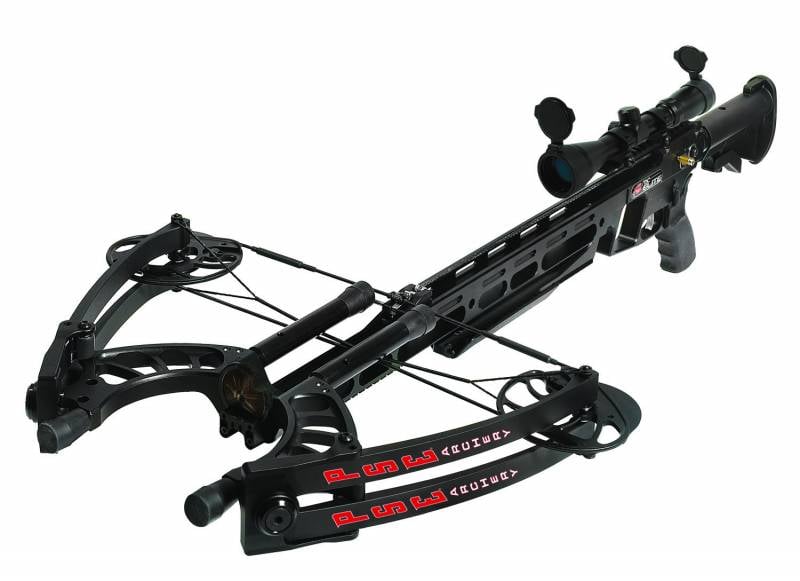
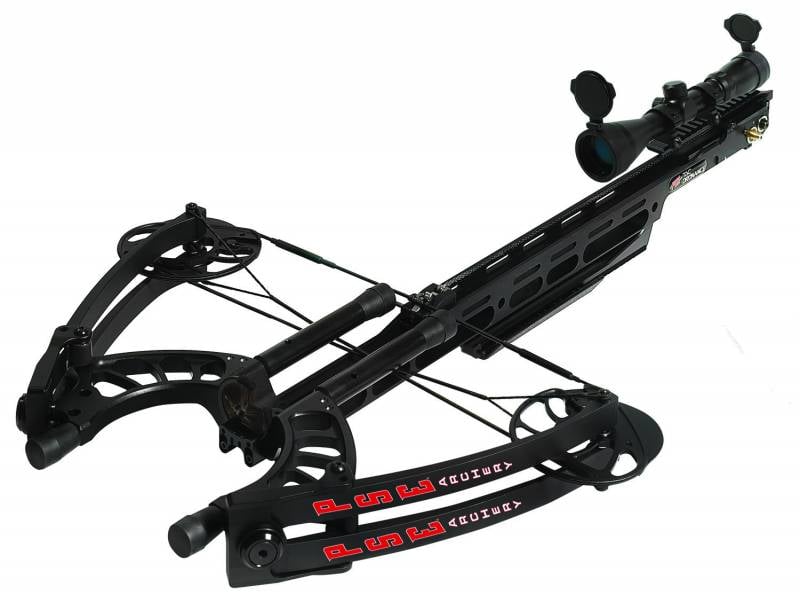
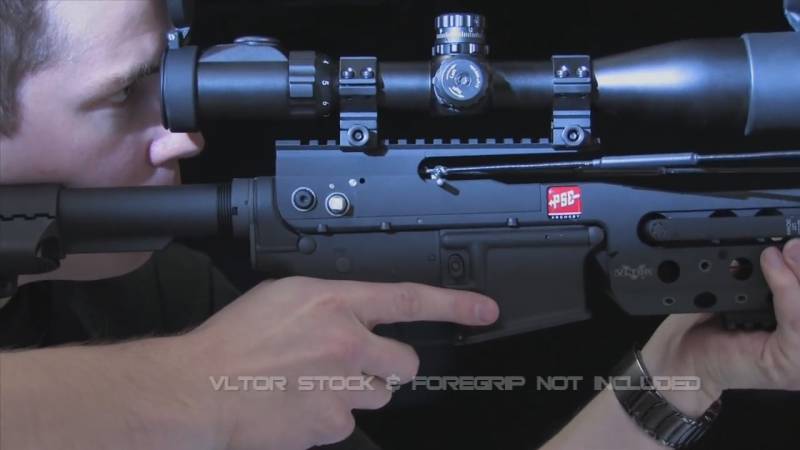
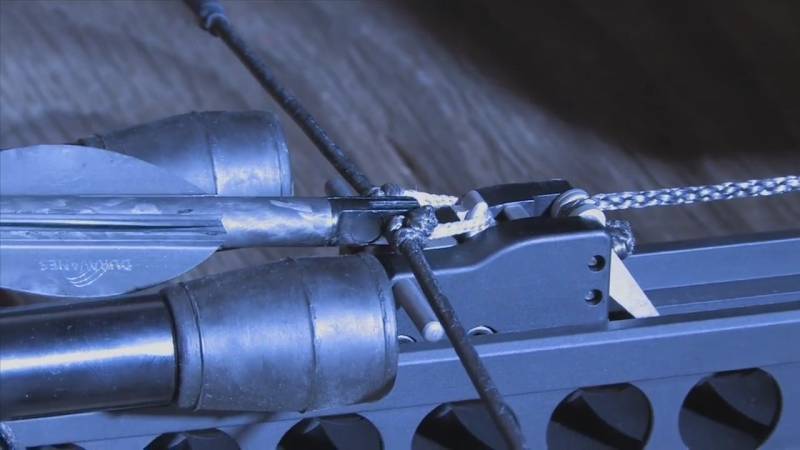

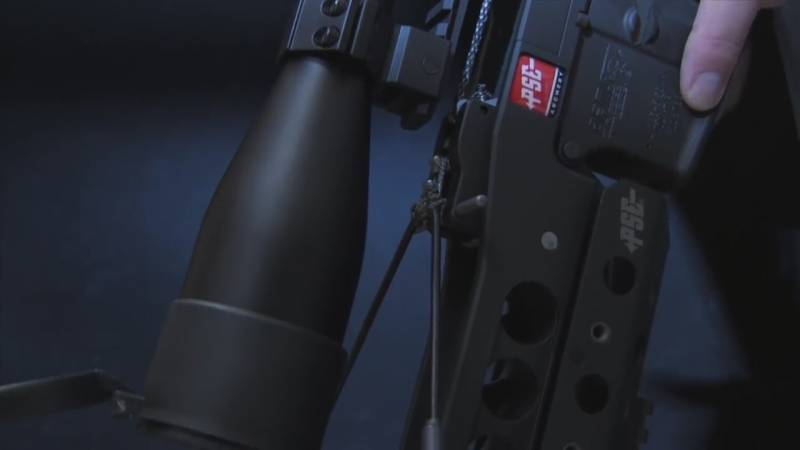
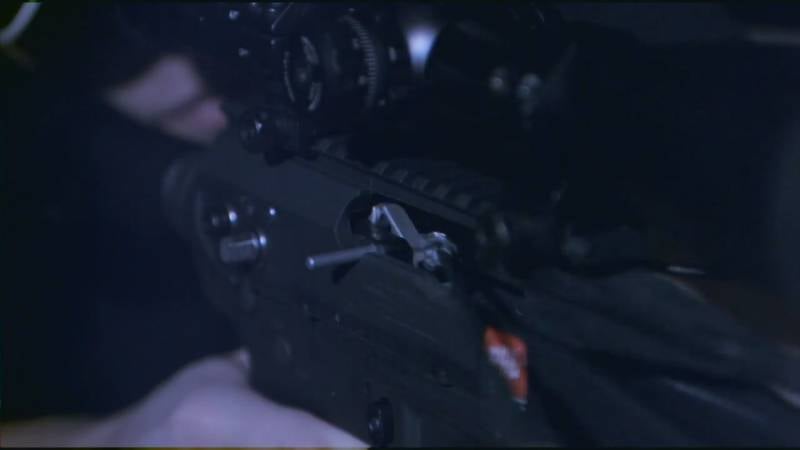
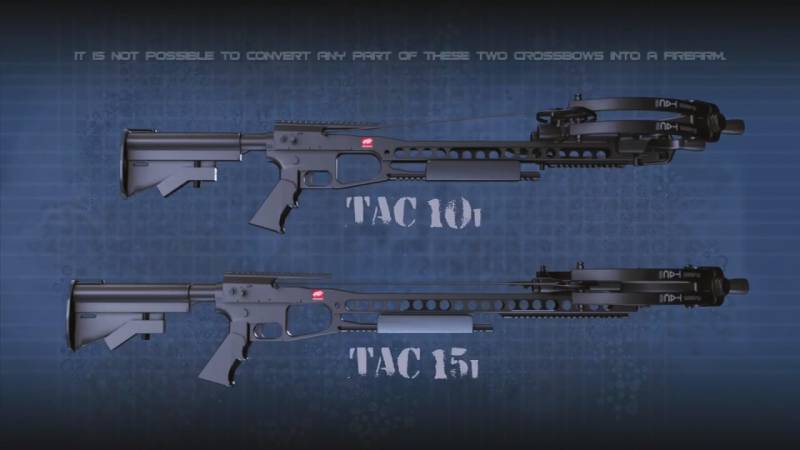

Information